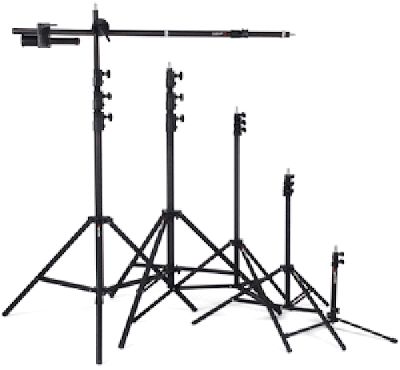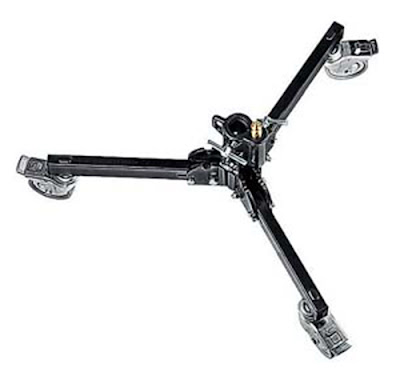The choice of light stands depends upon many factors, first and foremost what is the kind of photography that you do most, whether it is mainly indoors; (inside of your own studio) or outdoor in clients locations. Once you have made up the decision you choice is between stability and portability, or the best of both. Some sands are heavy, strong and could support more weight, some are light, weak, and could support only minimal loads. Remember what you have to put up there is a fortune invested in lights. So be careful while making choices about light stands. It is always advisable to choose good quality light stands, you will actually thank yourself for the decision as these are very rugged piece of equipments which will be the best of your friends for years to come, they will give you absolute peace of mind knowing your expensive investment in form of lights are safe.
 |
| Light Stands |
There are many photographers out there who make their own light stands by the simple process of sticking a wooden pole in a bucket full of wet concrete and letting it dry. Well this simple gadget is both heavy and reliable, and could serve the needs of photographers who does not shift locations, but as far as I am concerned I prefer investing in good quality light stands, if there is one equipment that is set up, torn down, folded, unfolded, put down, thrown and just generally abused on a daily basis it is a light stand. And I want them to work just fine, protecting my electronics and also in ease of operation. So my recommendation is to buy the best you can afford. Also there are light stands with wheels which makes shifting the position of light a very easy thing to do.
 |
| Light Stand Base With Wheels |
Setting up Light Stands
When setting up your light stands always make sure that the legs of the stand are spread to their widest point as it will considerably improve the stability. Place one of the legs directly under the direction the light is pointing. This will prevent the stand from tipping over when heavier modifiers like large softboxes are used with the lights. You should also use a sandbag or any other weights to secure the base of the stand if the lighting set-up seems top-heavy or if you are working in unstable conditions. While working outdoors it is always better to secure your light stands with weights, especially so if you have light modifiers like umbrellas or softboxes attached to your light heads, wind in one major threat while working outdoors, it could strike at any time and knock off your lights before you even realize what is happening.
In the next article we will discuss about Light Modifiers - Softbox